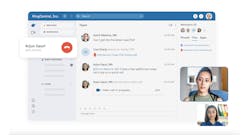A group of informaticists and other stakeholders has developed a call to action for health systems and health IT vendors with the goal of reducing clinical documentation burden in EHRs to 25 percent of its current level by 2025.
Reducing documentation burden is a hot topic. For instance, during an Aug. 11 Digital HIMSS21 session, several clinical leaders discussed how the introduction of new digital health tools and regulatory and administrative requirements is putting additional stress on providers.
To establish strategies and approaches to reduce documentation burden on U.S. clinicians, the American Medical Informatics Association, the National Library of Medicine (NLM), Columbia University Department of Medical Bioethics, and Vanderbilt Medical University Center sponsored a 25 By 5 Symposium.
In a recent blog post on the NLM website, Sarah Rossetti, RN, PhD, assistant professor of biomedical informatics and nursing at Columbia, and S. Trent Rosenbloom, M.D., M.P.H., vice chair for faculty affairs and a professor of biomedical informatics at Vanderbilt, described the symposium, held virtually over six weeks in early 2021. More than 300 people representing clinical settings, academia, EHR vendors and start-up companies, government, payers, professional organizations, and patients participated in sessions featuring more than 30 presentations from stakeholders.
As members of the 25 By 5 Symposium Steering Committee, Rossetti and Rosenbloom noted that the burden of clinical documentation on professionals has had a negative impact on healthcare since long before the first diagnosis of COVID-19. “This burden can lead to a variety of negative outcomes including clinician burnout and decreased job satisfaction, medical errors, and hospital-acquired conditions. The pandemic increased recognition of the role of clinical documentation on workload. This recognition provided an opportunity to consider the contributions of inpatient and outpatient documentation on clinician well-being,” they wrote.
The symposium led to the creation of a national action plan focused on short, medium, and long-term approaches to reduce documentation burden to 25 percent by the year 2025.
In their blog post, they synthesized and prioritized “Calls to Action” for key stakeholder groups:
Call to Action for Providers and Health Systems
• Establish guiding principles for adding documentation to EHRs and generating evidence for reduced documentation.
• Develop a national roadshow and educate clinicians and clinicians in training on balancing brevity and completeness in documentation.
• Increase support for functions like real-time information retrieval, documentation, and ordering in the EHR.
• Implement interdisciplinary notes to decrease redundant documentation.
Call to Action for Health IT Vendors
• Promote an ecosystem of interoperable systems to allow for complementary technology.
• Develop measurement tools to categorize documentation practices.
• Package best training practices into toolkits to promote best practice EHR use and plan recognition programs to publicize exemplars.
• Create simplistic EHR views to see that new clinical data has been reviewed, then bookmark for the user and document as reviewed by that user in the EHR.
• Implement user-personalized Clinical Decision Support to drive specific workflows.
Call to Action for Policy and Advocacy Groups
• Urge agencies to fund innovative research that captures all billing code information without taking up clinicians’ time.
• Select the best-of-breed approaches to documentation and implement throughout the health care system.
• Develop technology to reliably and accurately create reimbursement/payment data for all care settings.
“Now the hard work begins to turn these action items into change to benefit clinicians’ well-being and patient care,” wrote Rossetti and Rosenbloom. “This work will require the creation of a network of allies, convening sessions, and the creation of working groups from national health professional organizations in order to execute a national strategy for implementing and institutionalizing these changes.”


